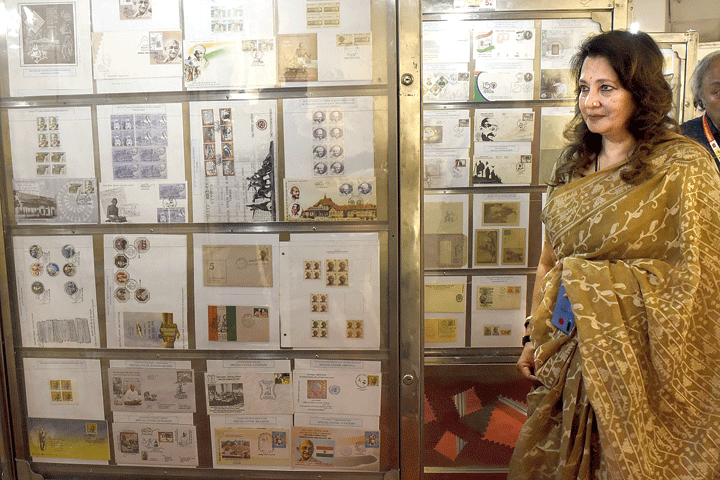Flags to cricket, tea to Taj Mahal, penguins to medical science... one can gain knowledge about a range of subjects through an unusual medium — stamps — on visiting the Academy of Fine Arts.
These are some of the themes of collections put up by philatelists at the State Philatelic Exhibition, a quadrennial event, which is underway till Thursday.
“The theme this year is Mahatma Gandhi, to commemorate his 150th birth anniversary. We have a gallery exclusively for Gandhi collections procured from veteran philatelists. Two other galleries are hosting collections in the competitive section. The gold medallist will qualify for the national meet,” said chief post master general, West Bengal circle, Gautam Bhattacharya.
Another attraction is the release of special covers every day. So far, two Gandhi-specific special covers have been released — on Young India, the weekly journal brought out by Gandhiji from 1919 to 1931, and on Tolstoy Farm, the training ground he set up in South Africa in 1910 for new members of the passive resistance movement. Other themes for release are Gandhi and Subhas Chandra Bose, and Gandhi and Rabindranath Tagore.
Tributes are also being paid to cultural luminaries of Bengal. On the first day, actress Moon Moon Sen released a special cover on her mother Suchitra Sen, while another was released on Rituparno Ghosh in the presence of Sudipta Chakraborty, who acted in Ghosh’s film Bariwali, his sister-in-law
Dipanwita Ghosh and critic-essayist Samik Bandyopadhyay.
“Ma was the first Indian actress to get an international award (for Saat Pake Badha in Moscow). This stamp, too, is like an award,” Sen said.
Special covers were also released on eminent poets and singers in later days.
How global the reverence is for Gandhi can be made out from the wide range of countries that have brought out stamps on him, including lesser-known nations like Tchad, Palau and Upper Volta. In some cases, he is part of a series, like one from Mozambique on four apostles of peace. Some commemorate special events in his life, like the centenary of the Champaran Satyagraha of 1917 or the golden jubilee of the Dandi March of 1930.
Events involving students are being held simultaneously. Ironically, none of the participants Metro spoke to had ever written a letter except as a classroom exercise or seen a stamp. The exhibition is introducing this generation to what for it is an anachronism.










